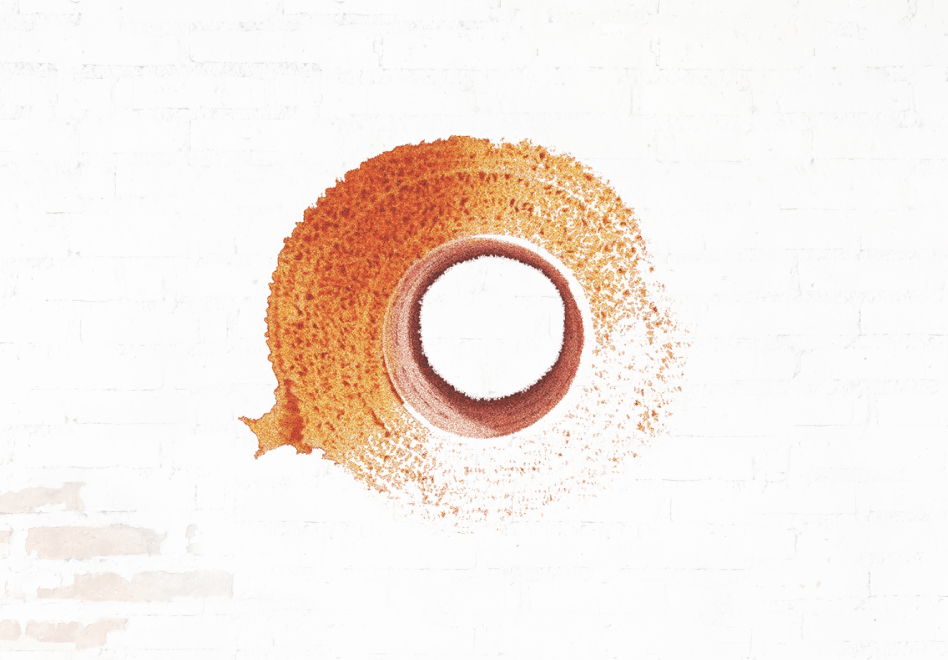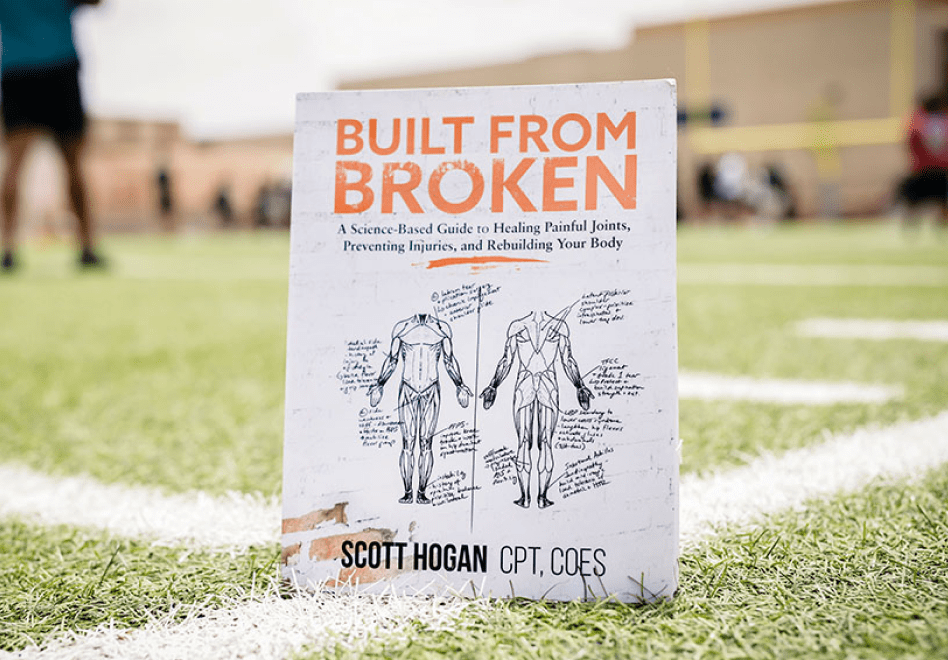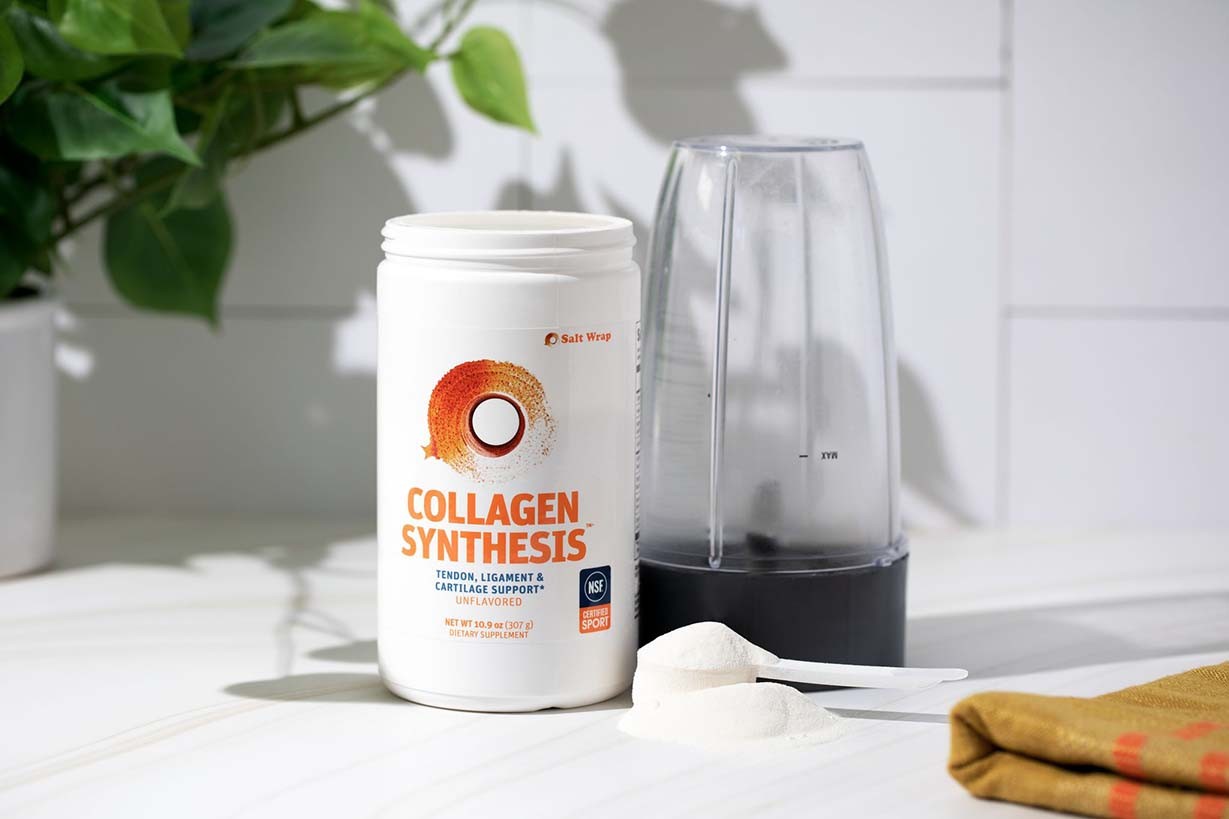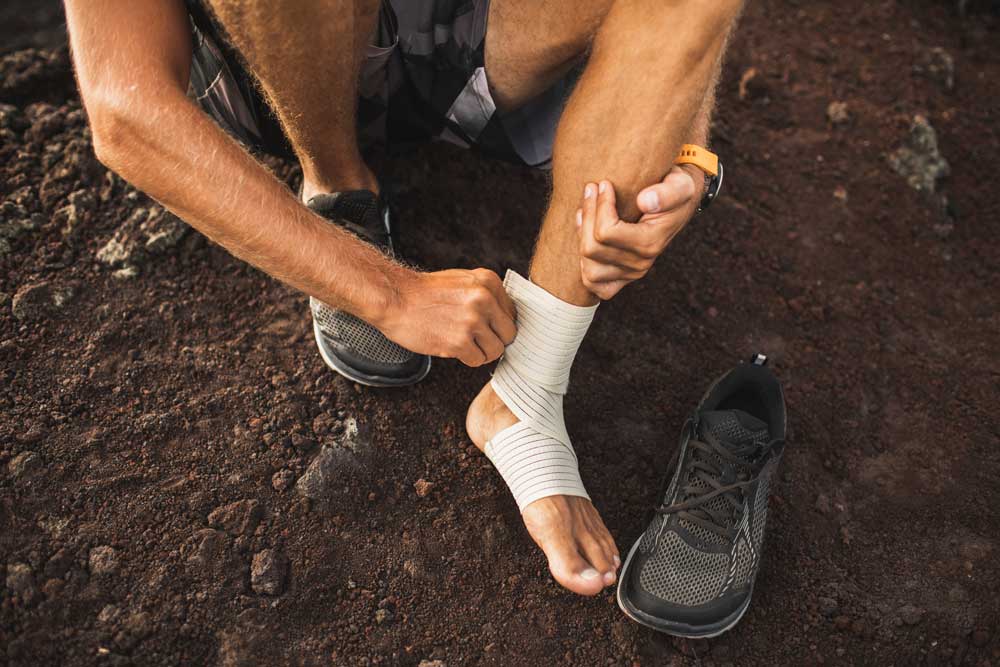
Be built (to last).
The right supplements can help you recover naturally and build a resilient body.
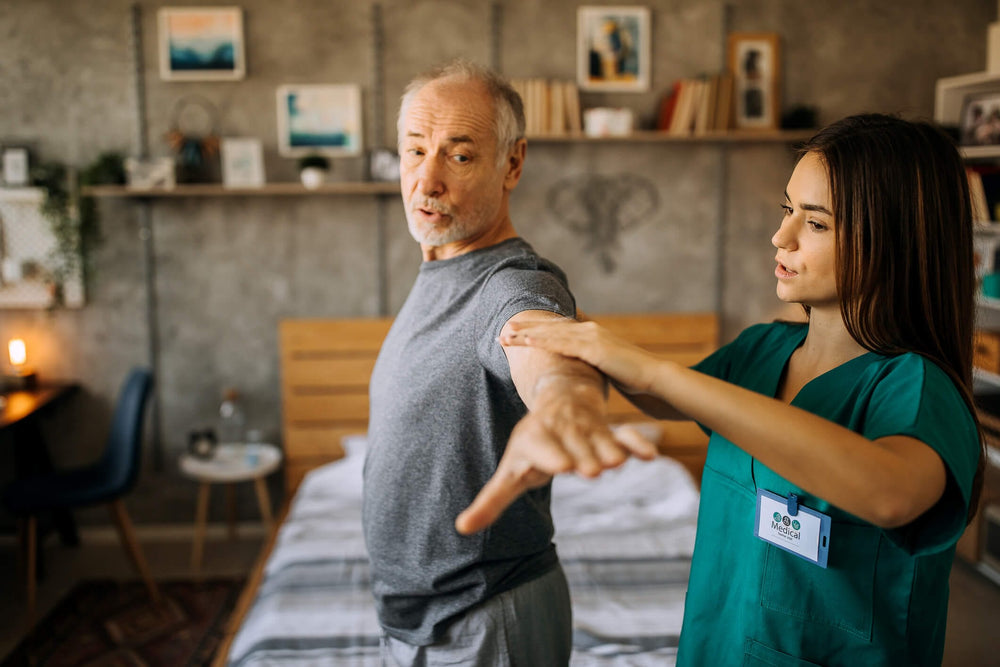
Supplement Quiz
Take this short quiz to discover the perfect supplements for your needs and goals.
About SaltWrap

Built from Broken
Get the best-selling book from SaltWrap founder, Scott Hogan, and start rebuilding today.
How to Optimize Synovial Fluid
By Joe Zagami
At some point, just about every athlete will experience joint stiffness and discomfort. Not necessarily the kind that sidelines you. But the kind that makes you wonder, “Hey... is that normal?” When joint stiffness or new noises (popping, crackling) arise, most people may look to blame their cartilage. But it may be the result of low or suboptimal synovial fluid.
Not a problem. In this article, you’ll discover three of the best (and easiest) ways to optimize your synovial fluid for maximum joint comfort and performance.

What Is Synovial Fluid?
Also known as joint fluid, synovial fluid lubricates your joints. Its consistency is similar to egg whites. This makes it perfect for reducing joint friction. And no surprise, it’s essential for joint health.
In fact, many instances of joint discomfort – especially those we’re willing to write off as a “normal part of aging” – can stem from suboptimal synovial fluid rather than your joint structures or connective tissues themselves. Low or poor-quality synovial fluid can contribute to stiff or creaky joints, for example.
But there’s more to synovial fluid than lubrication. Most people don’t realize that it also acts as a “biochemical pool” that removes waste products while allowing nutrients and regulatory cytokines – part of the body’s natural inflammatory response – to circulate through the joints.1
Without adequate levels of healthy synovial fluid, your joints may lack the lubrication and nutrients they need to function – and feel – at their best.
This makes optimizing synovial fluid critical for healthy joints. But before we show you how to do that, you need to know what causes changes in synovial fluid in the first place.
What Causes Changes in Synovial Fluid?
Most medical experts will tell you that the main variable in synovial fluid is age. The older we get, the less of it we have – and the lower the quality. Yes, age is a factor. But it’s not the only factor.
Several other factors can impact the quality and amount of synovial fluid in joints. These include obesity, trauma, and repeated use injuries.
It makes sense. With obesity often comes inactivity and chronic inflammation. Neither is good for healthy, comfortable joints. Trauma, such as a fall or other accident, is rarely joint-friendly. On the flip side, ask any pro athlete or construction worker about what their knees go through in a typical week, and you’ll understand all about repeated use injuries.
If you have just one of these factors working against your joints, that’s bad enough. But the effects can be even worse if you combine them. So, how can you determine the state of your synovial fluid?
How Do You Know if You Have Low Synovial Fluid?
Some medical experts say that one of the telltale signs of decreased synovial fluid is popping or cracking sounds in the joint.2 Joint stiffness is another key indicator of synovial fluid issues.
To be fair, everyone experiences these symptoms to some degree. But if your knees sound like a bowl of crispy rice cereal every time you move, going from standing to sitting isn’t effortless, and you experience tightness with the noise, it could point to low or suboptimal synovial fluid.
If you notice significant changes in pain levels, visible swelling, or other signs of inflammation (ex: redness or other discoloration, warm to the touch), you may want to consider getting your synovial fluid checked out.
Yep, seriously. A healthcare provider can perform a synovial fluid analysis – also known as a joint aspiration – to determine its quality.3
First, they’ll eyeball the color and clarity. Healthy synovial fluid should appear clear to straw-like in color. Cloudy synovial fluid could be a sign of inflammation or an infection. Blood could indicate trauma or other injury to the joint.
The next step is to let the sample rest for an hour to see if a fibrin clot develops. Clotting of any kind could indicate a bigger problem with the joint’ synovial membrane.
Finally, the sample will be sent for lab analysis. Technicians will look for the presence of red and white blood cells. Large amounts of either type of cell could point to bigger joint problems, such as gout or bacterial infection.
This is all good to know. But it may not be necessary.
The truth is that there are simple steps you can take to help improve both the quality and amount of synovial fluid in your joints.
Can You Replace Synovial Fluid?
The short answer is “yes.”
Viscosupplementation involves a series of up to five direct injections of hyaluronic acid into the affected joint over the course of several weeks.
But there’s a catch. Unlike hip or knee replacement surgery, viscosupplementation is not a total artificial solution. It’s not like getting a “brand-new” joint. Rather, its effects wear off over time if the underlying problem – suboptimal joint health – isn’t resolved.
The takeaway?
As a last resort, viscosupplementation may provide some relief for people waiting to have surgery. But there’s also a chance that it may provide none. So, it should not be the go-to solution for optimizing synovial fluid or improving overall joint health.
Read on to discover three of the best ways to optimize synovial fluid naturally.
How To Optimize Synovial Fluid
If you’ve had an accident or other trauma, or you suspect there’s a serious problem with your joints, seek medical attention – and worry about optimization later.
But if your joints are achy, creaky, crunchy, crackly, or otherwise not in the best shape, these synovial fluid optimization techniques are for you.
Do the Right Exercise
Your first instinct might be to avoid excess movement of any problematic joints. But this could be a big mistake.
Research shows that knee flexion and extension exercises (bending and extending your knee) stimulate the release of synovial fluid into joints, which also helps release hyaluronic acid to lubricate the joint and nourish the surrounding cartilage. This triggers a cascade of natural anti-inflammatory activity.
Researchers in one study concluded that moderate physical activity may have, “protective roles on joints as a non-surgical and non-pharmacological treatment . . . postponing the need for joint replacement. To maintain joint health is fundamental for independent living, good health status, and quality of life.”4
What does this mean in practice?
For starters, resist the urge to avoid movement. Even if it’s something as simple as seated knee flexion and extension, exercise will nourish – not burden – the joints.
Just make sure not to overload the joints with too much weight (ex: low-rep sets of heavy barbell squats), or put them into compromising positions (ex: machine leg extensions with the starting knee position at less than 90 degrees.)
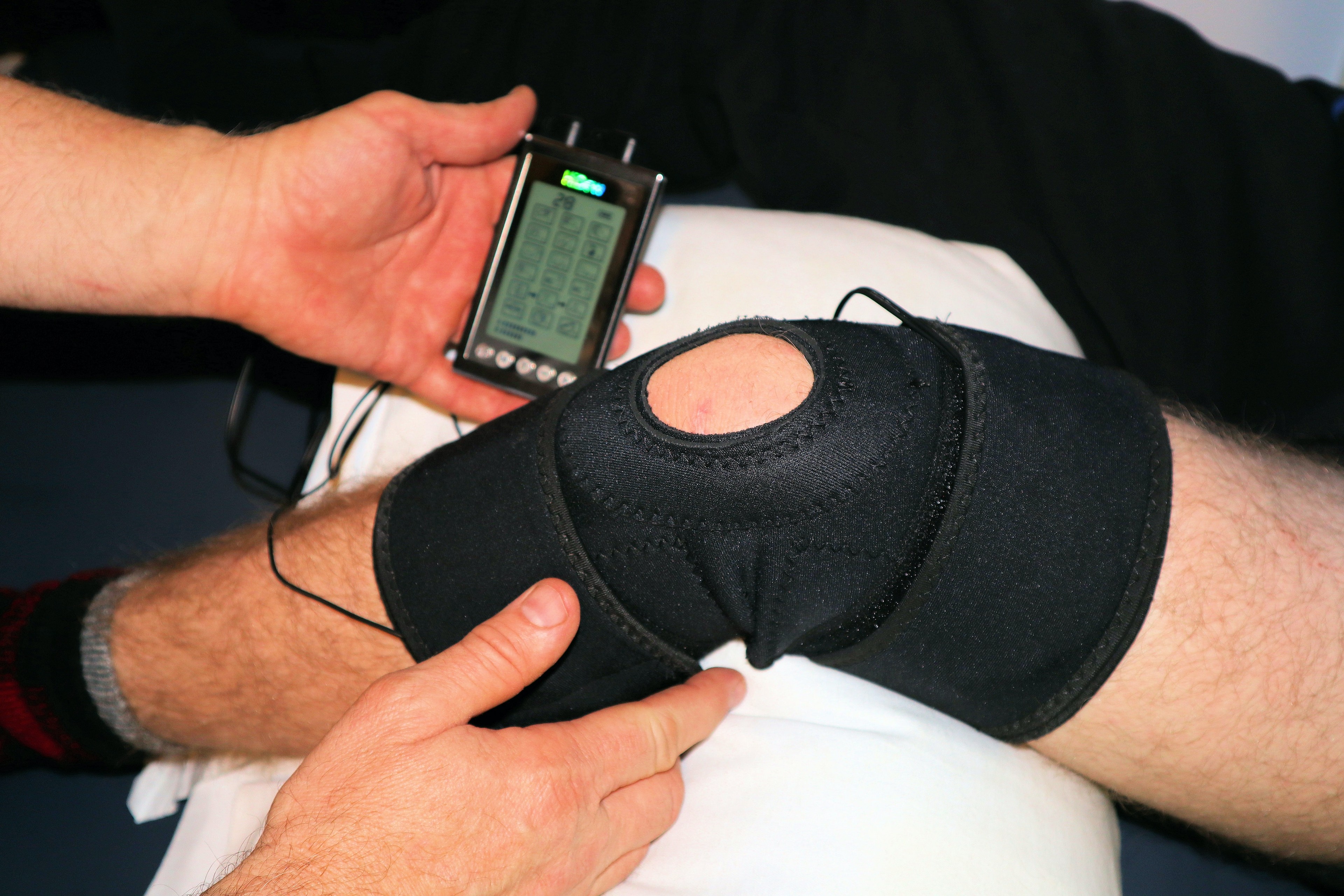
Above: Even something as simple as seated knee flexion and extension can help "pump" synovial fluid into the joint.
Eat a Joint-Friendly Diet
It can’t be overstated: many joint problems – including synovial fluid issues – stem from inflammation. And while you can’t permanently eliminate inflammation (remember, some inflammation is a good thing), you can help control it with your diet.
The first step is to stay hydrated. Don’t stress out over how much water to drink in a day. Instead, follow this simple rule: always have water with you.
Going for a walk? Bring a bottle of water.
Watching some TV after dinner? Have a glass of water next to you.
Stuck at your desk on a phone call? You get the idea. The real “trick” here – if there is one – is to always keep water within reach.
The next step is to eat an anti-inflammatory diet. The best way to start is to eliminate – or drastically cut back on – the ultra-processed foods in your diet. Things like sugar-sweetened soft drinks, frozen meals (even the “healthy” ones), chips or other salty snacks that come in a bag, and just about any packaged goodies in your pantry that you wouldn’t want your mother to catch you sneaking.
Don’t worry, it’s not all about deprivation. Even more powerful than what you subtract is what you add. You can check out Scott’s in-depth look at the real (simplified) anti-inflammatory diet here.
Take Synovial-Boosting Supplements
There’s no shortage of supplements for supporting joint health. But they don’t all translate to better synovial fluid. Here are three that do:
Fish Oil
Studies have linked fish oil intake with better synovial fluid and less joint pain.5 While the effect isn’t fully understood, it’s likely due to fish oil’s potent anti-inflammatory properties. Numerous studies have linked EPA and DHA – the two primary “healthy fats” in fish oil – to reductions in inflammatory cytokines and enzymes that attack cartilage.6
In other words, fish oil is a good insurance policy for optimal joint function. Aim for at least one gram per day from a high-quality and trustworthy source.
Curcumin
This powerful antioxidant comes from turmeric, which has long been used in Ayurveda to relieve joint pain. But most of its anti-inflammatory benefit comes from curcumin.7 One study found that curcumin can help suppress inflammation in the synovial fluid of older patients.8 Another found that combining curcumin with exercise (told you) reduced inflammatory markers in synovial fluid.9
We recommend finding a product that uses at least 250 mg of Curcumin C3 Complex®, a well-studied and award-winning branded ingredient, as its curcumin source.
Hyaluronic Acid
While you’ve likely seen it used in cosmetics and anti-aging products, hyaluronic acid is an all-star when it comes to joint support. Your body produces it naturally to cushion and lubricate joints. Studies show it improves synovial fluid effusion in joints. The result? It can also help reduce joint discomfort by directly supporting synovial fluid.10 And that’s in addition to its ability to help increase joint strength.
Aim for 80 mg of hyaluronic acid per day.
Clinical Advisory Board Commentary

Alaina Curry, DPT
Doctor of Physical Therapy, NSCA CSCS, and Former NCAA All-American Athlete
I love this topic. After all, my unofficial motto is, “Motion is the lotion.” And that’s really what it’s all about. Movement helps to lubricate the joints. It’s how synovial fluid moves throughout the joint.
One point worth reiterating about popping or cracking joints: noise alone doesn’t indicate a problem. In most cases, these sounds and sensations can be attributed to nitrogen bubbles (a component of synovial fluid) that happen to escape the joint.
However, when popping or cracking is accompanied by pain in the surrounding area, it could indicate a bigger problem.
In the case of hyaluronic acid injections, I’ve seen many patients have great success in terms of pain relief. But these effects won’t last forever.
I can’t stress enough how important it is to adjunct HA injections with physical therapy.
Just like getting a cortisone shot for pain, if the root cause of the pain isn’t addressed, the pain will almost certainly come back. And the problem will return.
A physical therapist can put the joint through a passive range of motion to help facilitate natural lubrication.
Depending on the individual, some parts of the joint may be unable to move through the full range of motion without assistance. This is why a physical therapist's passive range of motion can be beneficial. It allows the joint to move through the full range of motion, thus increasing lubrication and promoting natural healing.
One last thing on the topic of diet and supplementation.
It may sound cheesy, but there’s a reason they say, “You are what you eat.” What you put in your body makes up your body. When it comes to optimizing joint health, this factor can be easy to overlook – but that would be a mistake!
Putting It All Together
Healthy joints are about more than just cartilage and other connective tissues. Synovial fluid plays a major role in how our joints work and feel. And neglecting it could mean the difference between noisy, achy joints and smooth, high-performing joints.
Thankfully, you don’t need to turn your life upside down to optimize synovial fluid.
Choosing the right exercises helps act like a pump to not just get synovial fluid where it’s needed most, but also produce more of it.
Eating a joint-friendly diet will help prime your joints for lubrication while also helping to keep a handle on inflammation. (This is what we call a “win-win.”)
And taking the right supplements – especially fish oil, curcumin, and hyaluronic acid – will help improve the quality of your synovial fluid while also supporting optimal overall joint function.
SaltWrap has plenty of Therapeutic Sports Nutrition™ solutions that can help you put optimal joint health within reach. But if you’re looking for the best place to start, it’s hard to beat Collagen Synthesis™.
Unlike generic collagen supplements that may be assimilated into bodily tissues at random, the patented, clinically studied peptides in Collagen Synthesis are engineered specifically for cartilage, tendons, and ligaments.
Plus, in addition to more servings per bottle, our newly upgraded formula now contains 80 mg of hyaluronic acid per serving for even more joint-optimizing power.
Simply put, there’s never been a better way to give your joints the raw materials they need to work – and feel – at their best.
Click the button below now to learn more.
Founder: Scott Hogan

I created SaltWrap to bring together the most practical ideas in therapeutic sports nutrition, corrective exercise, and functional fitness — with the goal of keeping you (and myself) strong, mobile, and built to last.
I've worked as an A.C.E. Certified Personal Trainer, Orthopedic Exercise Specialist, and nutritional supplement formulator.
But more importantly — I've spent most of my life battling injuries, joint pain, and just being plain beat up. So I know what it's like to struggle toward fitness goals.
SaltWrap is here to push you through injuries, setbacks and perceived physical limitations. To a place beyond what you think you're capable of. Sign up here to stay in the loop.
Learn more about my best-selling injury prevention and recovery book, Built from Broken.

